#the rock biography
Text
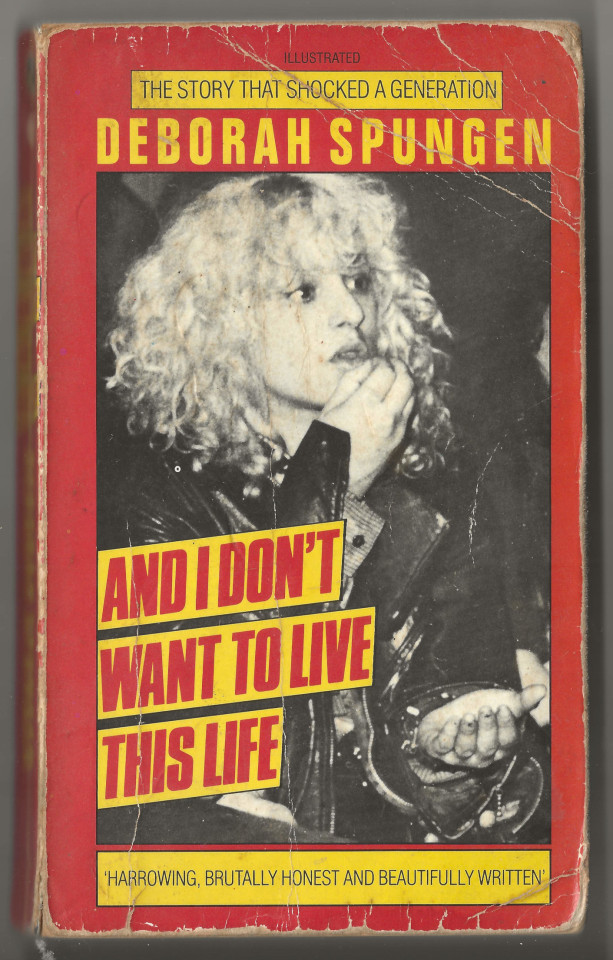
And I Don't Want To Live This Life, Deborah Spungen's memoir of her daughter Nancy Spungen.
#books#vintage books#covers#biography#punk rock#Deborah Spungen#Nancy Spungen#Sid Vicious#The Sex Pistols#1985#80s
114 notes
·
View notes
Text

Hendrix - A Biography by Chris Welch (1972).
42 notes
·
View notes
Text
"𝑨 𝒎𝒐𝒗𝒊𝒆 𝑰 𝒉𝒂𝒅 𝒔𝒆𝒆𝒏 𝒐𝒇 𝒉𝒊𝒔 𝒘𝒂𝒔 '𝑮𝒊𝒂𝒏𝒕'. 𝑻𝒉𝒊𝒔 𝒘𝒂𝒔 𝒂 𝒈𝒓𝒆𝒂𝒕 𝒓𝒐𝒍𝒆 𝒇𝒐𝒓 𝒎𝒆.."🎬~𝑻𝒉𝒐𝒎𝒂𝒔 𝑰𝒂𝒏 𝑮𝒓𝒊𝒇𝒇𝒊𝒕𝒉
Thomas Ian Griffith as Rock Hudson in the biopic movie circa 1990.
🎶: big boy - sza
Find me on X and Instagram
#thomas ian griffith#tig#rock hudson#throwback#90s movies#it 1990#tv movie#biopic#biography#bnw#black and white#big boy#he's so charming though!!#sir!!
19 notes
·
View notes
Text


After three weeks in Morocco in November 1977, the lovers spent Christmas together in London and the New Year in Barbados and then Paris, where Jagger pushed aside a hovering photographer outside the Club Elysees Matignon. What made the spectacle different from similar ones was that the Frenchman didn’t swallow the insult and skulk off. A martial-arts black belt, he seized Mick and flung him onto the pavement.
Glancing at the consequent tabloid shot of her husband, openmouthed and grovelling, Bianca may have tittered with satisfaction.
Alan Clayson, Mick Jagger: the unauthorised biography.
#so funny tho poor Mick#mick jagger#the rolling stones#old rockstar#rockstar gf#photos by PRIVATE PICTURES - DANIEL ANGELI AND JEAN-PAUL DOUSSET#classic rock#70s rock#70s music#70s era#rockstar girlfriend#Alan Clayson#Mick Jagger: the unauthorised biography#book quotes#jerry hall#quotes#rockstar boyfriend#bianca jagger
22 notes
·
View notes
Text
youtube
UK indie rock band Delays' 2006 album You See Colours, a follow up from 2004's breakthrough debut Faded Seaside Glamour. The album was a slight departure in the band's sound from a more guitar-based sound that to me, fell somewhere between The Stone Roses and The La's more psychedelic, shimmering golden indie, to something more suited to the dancefloor, with funkier beats, more synths, more pop vocals and that synth bass you hear on Valentine. Quite the indie dancefloor tune, hear that chorus! I have to admit, it took me far longer than it should've to work out whether this band had a female vocalist I'd missed, because Greg Gilbert's falsetto is that of a nightingale. It's gone straight into the indie dance playlist I'm maintaining, you know, just in case I was ever asked on the spot to curate an indie night (in a city where that isn't really a thing lol), and I need to be cool and also not bore the attendees.
Of course, that will fail because not enough people know Delays. I personally only found them when their keyboardist guested on an episode of Nevermind The Buzzcocks. It's still a song to shake your shoulders to! The funny thing is, this change in direction from the band was prompted by the other members of the band. Singer and guitarist Greg Gilbert had written most of the songs on the first album, and the band had accumulated about a 100 songs by the time they were going in to record their second. Their keyboardist, his brother Aaron, lost the only demos they had, and so the band were forced to write from scratch. No man, I imagine, can write a 100 songs again, and so Greg was forced to open up the songwriting to other members of the band, and so came in a wider range of influences, taking the band away from the Britpop sound, and placing them firmly within the 00s indie rock music scene of the UK.
Their songs began being used on national television on the football program Match Of The Day, and they even were on Top Of The Pops with this song, Valentine (before the weekly programme eventually shut down in 2006 of poor ratings and became a Christmas annual special). And of course, keys player Aaron Gilbert appeared on Nevermind The Buzzcocks.
Band members eventually drifted apart and got interested in other art projects after 4 albums together, they recorded a few demos again in 2015, but never went on to make much of them.
Greg Gilbert died in 2021 of cancer, so that's the band done, sadly.
#Delays#indie rock#indie sleaze#dance#2006#2004#00s music#why am I writing biographies for one hit wonder bands; I have actually really important code to get working properly!!#we're going to competition and I need to get my code working. Nonetheless.#Greg had such a beautiful beautiful voice it's unreal#music#musicians#music bio#indie music#UK music#Nevermind The Buzzcocks#I imagine I'll be listening to way way more of their stuff#panel shows#Youtube
9 notes
·
View notes
Text




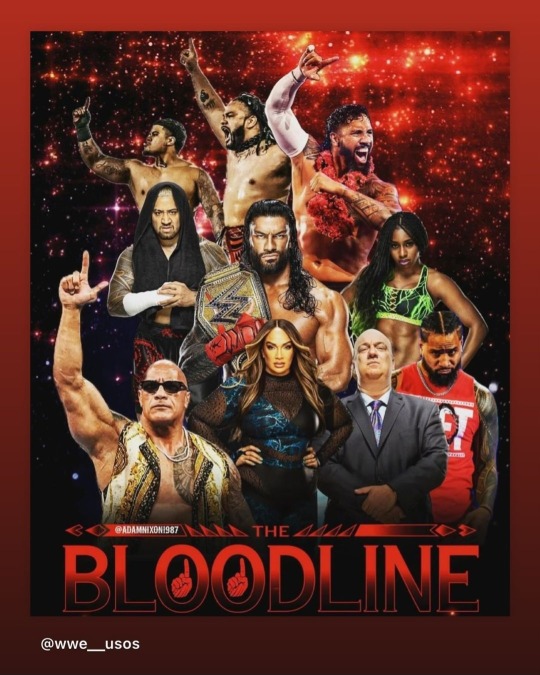




Levels Above: The Bloodline: The Samoan Dynasty 👑 ☝🏾
Exclusive photos by Digital Charlie \nFor HeymanHustle.com
#SmackDown March 22, 2024
#RomanReigns #PaulHeyman
[📸 Via HeymanHustle.com]
romanreigns:
Just a few chapters from the Big Book. Hope you enjoy. ☝🏽 📸: @redlight24fps
THE TRIBAL CHIEF // 03.31.24
Over the last 7 or so years, I have had the privilege of documenting the journey (so far..) of @romanreigns
From the highest of highs to the lowest of lows, this is the story of a man who, in the face of adversity overcame it all to become the most dominant force in our business.
redlight24fps:
I am ever thankful to be entrusted with the access to tell these stories and tonight you can watch the fruits of this in Biography: Roman Reigns on @wweonae All the props to the legend himself @paulheyman in helming this, @harleyglantz and the entire team behind it! Photo shot on @leica_camera Q
#john cena#paul heyman#the rock#nia jax#naomi#zilla fatu#jacob fatu#solo sikoa#jimmy uso#jey uso#roman reigns#the tribal chief#undisputed wwe universal champion#greatest universal champion ever#longest reigning universal champion#1300+ days and counting...#the only one#greatness amongst you#levels above#the bloodline#the samoan dynasty#foreva#wwe legends#a&e biography
13 notes
·
View notes
Text
I love how the most Rockstar™️ moment in Geddy’s book so far has been Alex getting drunk whilst frustrated about being away from home, acting like a lunatic, then personally apologising to all the hotel employees the next morning 🥺 this band is so wholesome
#most biographies tell you stuff you didn’t entirely want to know but this is making them all look great haha#i am surprised at how many drugs they did though damn#dustnroses.txt#rush band#prog rock
21 notes
·
View notes
Text
Queen's Hot Space Era: A Deep Dive
Masterlist

I’ve been thinking over this album and era more than usual lately, and decided that I’d write this up. Perhaps as a way to extricate all the Queen knowledge from my head, and the era in question takes up quite a lot of RAM.
The Hot Space album, and era, is very controversial and to this day garners a polarising set of opinions amongst fans and critics alike. So I just thought what the hell, let’s let everyone know what the hell was going on with Queen in the early 80s.
The Hot Space album was the 10th studio album by Queen and was released on the 21st May 1982. It had elements of disco, funk, R&B, dance, and pop, which was very different to what Queen had been doing throughout previous albums. The dance elements of this album was supposedly inspired by the success of Another One Bites The Dust, released in 1980.
Another One Bites The Dust was extremely successful in the US and the UK, the two largest marketing countries in the Western world, at least at the time—and Queen aimed to prolong that success.
The band started recording for Hot Space in June of 1981, and spent a gruelling 10 months on the project before wrapping up the production element in March of 1982. Upon its release, fans and critics found it disappointing. Stephen Thomas Erlewine of Allmusic said “the band that once proudly proclaimed not to use synthesisers on their albums now dramatically reversed course, dedicating the entire first side of the album to robotic, new wave dance pop, all driven by drum machines and coloured by keyboards with Brian May’s guitar coming in as flavour only on occasion.”
The fourth track on Hot Space, Body Language, has been dubbed the worst song in Queen’s discography by fans, and the whole album received no more than a 3-star rating overall.
Rolling Stone gave them a 3-star, whilst the Encyclopedia of Popular Music gave a 1-star… Yikes.
Hot Space is one of the more obscure Queen albums to those who are not currently, or have ever been, active within the fandom. So we’re going to break it down a little bit, and let’s just talk about the background and context of what the hell was going on with them.
So in 1981, Queen recorded Under Pressure with David Bowie, and it’s still considered one of Queen’s staple and most popular songs. It was recorded in Montreux, and was a completely separate project to Hot Space. The band had met up with Bowie and jammed together for a while, just to see if they could come up with something to lay down and master. Of course, as most people know, bassist John Deacon came up with the iconic Under Pressure bass riff, just before they all went out to get some pizza. And by the time they’d returned to the studio, he’d forgotten it! But luckily drummer Roger Taylor remembered it.
Now, this was the first time Queen weren’t working alone; they were used to working only with their producers, never having had anyone else’s input. The two artists merged as one for the song and it pointed in the direction of a potential new road for Queen—it was looking like an exciting one.
But what went wrong during the recording of Hot Space?
Brian May recalls that there was a total change of life for all of them. They travelled to Munich and according to Brian, that’s when things started to go downhill.
Let’s talk a little bit about the studio in which they recorded the album in Munich. It was situated in the basement of a hotel, and it was called Musicland Studios. It closed in the 90s due to some road issues, so it’s no longer open. But Brian remembers this place being grim and depressing.
The band’s mental health started to deteriorate after learning some unsettling details about the place. In Brian’s words:
“A lot of people used to jump off the top of the building and kill themselves off that particular building. We didn’t know that until we got there.”
The urge to finish recording grew, and they spent months at the hotel.
The aim was to create an album that focused more on the dance elements of music due to the success of Another One Bites The Dust, as I mentioned before. They seemed to be in luck, as Freddie Mercury’s entourage at the time was concentrated with dance influences in the form of Paul Prenter.
Now, who was Paul Prenter, you ask? If you’ve seen the film, you’ll kind of already know, but here’s a bit more of an in-depth look at him.
Paul Prenter was Freddie Mercury’s personal manager from 1977 to 1986. Despite their professional relationship, the two also engaged in intimate relations, and Prenter had a huge influence over Freddie’s life during the time he worked for him. He held partial responsibility for Freddie’s excessive involvement in drugs, alcohol, and his growing promiscuity.
Freddie was known to have fired Prenter in 1986, and shortly after it was plastered all over the news. It turns out Paul Prenter had sold personal stories to the press about Freddie… What a dick.
After receiving money from multiple press outlets, he moved back to his hometown of Belfast and spent it all—smart. He then asked Freddie for more money! After all that, he went back and asked him for money! But it’s okay, he did succumb to complications from AIDS a few months before Freddie. So… Freddie got the last laugh, it seemed.
You’re probably wondering what Paul Prenter had to do with Hot Space. After all, he wasn’t part of the band, right?
Well, Freddie’s life was ruled by the New York-inspired gay lifestyle of the 80s, particularly engaging in extreme partying and extreme promiscuity. And at the time, Freddie had suggested to the band that the music on their new album should sound like that of which they’d play in a gay bar, but those words had initially come from Paul Prenter.
It’s said that Prenter despised guitars and relentlessly referred to Brian May as old-fashioned. Roger Taylor recalled that Prenter was a “very bad influence” on the band:
“He was a very, very bad influence upon Freddie, and hence on the band. He very much wanted our music to sound like you just walked in a gay club, and I didn’t.”
The strain and tension became inevitable with the four personalities—and we all know that John, Freddie, Brian, and Roger have massive personalities. Whilst they had always experienced bickering, as most bands do, they now with the added tension, the production of the album isn’t going to go as smoothly.
“Arguments would start off as creative, but slowly became personal.”
Brian recalls that less and less time was spent in the studio and more time was spent arguing.
To put it into perspective about what life was like for the 10 months they spent recording Hot Space in Munich…A regular day recording this album went a little bit like the following:
The entourage recall waking up at 3am, working for hours, having dinner, and then roadies would mix up cocktails and other things would pursue. The band got mixed up in cocaine and various other drugs. Random women, and relentless drinking, and as any sane person will tell you, that is not a good thing.
Roger described it as an exhausting cycle day after day. Imagine doing that for 9 whole months.
Brian remembers them getting into “deep trouble emotionally” in Munich, which possibly explains why their mental states deteriorated.
Now, the Hot Space era didn’t just end when the album came out. Obviously, when an album comes out, you have to do interviews to promote your album and after months and months of bad influences and arguments, the band’s relationship had kind of broken down. Things continued in quite a tense fashion.
In fact, Freddie was left very unhappy and depressed after Hot Space wrapped up—it lasted a while, and he was completely immersed in places and habits that remained detrimental to his fate. Freddie became passive during interviews and defensive on certain questions concerning anything but current projects.
His attitude during the 1982 press conference in Europe was already standoffish and it was extremely obvious that he didn’t want to be there. The body language of the others, especially Brian, speaks volumes. The mood is low and they all seem exhausted.
Another nationwide interview the band gave in promotion for the album presented the group separated; Freddie was notably disinterested as the others spoke. There was even a moment where Freddie responds to the interviewer’s question with “let’s break up tomorrow” as a joke. But, watching it, you can’t help but feel there’s some truth to his words. Nobody laughed, even Roger looked uncomfortable by it!
One of the more well-known interviews from this era was with Brian and Roger, which displayed multiple moments of awkwardness with them both trying to make jokes and seem like they’re happy with what they’d produced, making up amateur excuses as to why they created something with a different sound. In my opinion, they just didn’t seem very happy. Do we even need to mention the “shut up” from Roger, and then the succeeding comment from Brian about Mack having the best drum sound?
Then, we have the iconic 1984 Freddie interview, where he left viewers stunned with his answers:
“I love my job, but I hate talking to people like you,” “I’m not an artist, I’m just a musical prostitute, my dear.”
The long-term effects of what happened behind the scenes of Hot Space were everlasting and turned the group into four completely different people than they were prior to 1982.
As I’ve already mentioned, Hot Space wasn’t received well upon its release, and there are still very strong opinions about it today. Brian stated in 2014 that it isn’t the band’s worst album, but the timing of its release was just wrong. As time goes on, more people begin to accept the Hot Space album as just another reason why Queen is one of the most versatile groups of all time, with them branching out into very different styles to what they’d done earlier in their career, like Sheer Heart Attack, News Of The World, etc…
80s culture looked down upon disco and funk, so reception for Hot Space was bound to be less than amazing. However, today, all styles of music are simultaneously celebrated, and people enjoy the album more now than they did 40 years ago.
So in conclusion, recording Hot Space was a difficult period for Queen. It’s horrible to think about your idols going through the kind of thing they did in the early-mid 80s, influenced by not very nice people. But focusing on the album itself, it’s truly not a bad album at all. Granted, the timing of the release wasn’t the best for Queen, but it holds up as a fan favourite today.
If you haven’t heard any of the songs from Hot Space, besides Under Pressure, I highly recommend you check it out. It’s very different to what Queen usually did and I think it’s worth a listen.
Anyway, I’ll leave it at that. Let me know if you liked this little… post, whatever the hell it is, and if I should do more posts like this. I enjoy throwing all my useless knowledge onto a page lol.
#80s#1982#hot space#queen#queen band#freddie mercury#brian may#john deacon#roger taylor#music#album#80s music#album review#album recommendation#deep dive#classic rock#music history#music deep dive#queen deep dive#biography#article#music article
10 notes
·
View notes
Text
Aaron Lange, Peter Laughner, and the Terminal Town of Cleveland, Ohio
Cleveland-based artist, Aaron Lange, tackles his first graphic novel, Ain't It Fun -- a deep dive into the oily depths of the Rust Belt's most influential music town, it's most mythological misfit, it's oft-forgotten artistic and political streaks, and beyond...
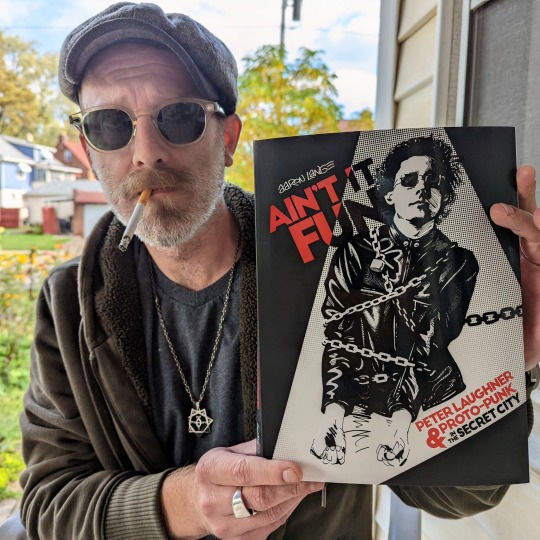
Aaron Lange and his book, 2023 (Photo by Jake Kelly)
--------------------------------------
There’s a recurring line in Aaron Lange’s remarkable new graphic novel, Ain’t It Fun (Stone Church Press, 2023), that states, “Say the words out loud. The River isn’t real.” The river Lange was speaking of is the Cuyahoga, that infamously flammable mass of muck that dumps out into Lake Erie.
Peter Laughner (the ostensible topic of Lange’s book) was an amazing artist who probably could’ve ditched the banks of the Cuyahoga for more amenably artistic areas back in his early 1970s heyday. Aside from his frequent pilgrimages to the burgeoning NYC Lower East Side scene (where he nearly joined Television) and a quickly ditched attempt to live in California though, he mostly stuck around northeast Ohio.
While desperately trying to find his sound and a workable band, Laughner smelted a post-hippie, pre-punk amoebic folk rock, and formed the influential embryonic punk band, Rocket from the Tombs, which later morphed into Pere Ubu. All of which – lumped up with other rust-belted oddballs like electric eels, Mirrors, DEVO, the Numbers Band, Chi-Pig, Tin Huey, Rubber City Rebels, and more – essentially helped formed the “proto-punk” template.
youtube
Laughner was also a rock writer of some regional renown, and contributed numerous amphetamine-fueled articles to regional mags like The Scene and Creem -- mostly concerning where Rock'n'Roll was going, colored as he was by the Velvet Underground, the Stooges, David Bowie, and Roxy Music playing in Cleveland a bunch of times around his formative years.
Sadly, in June 1977, Laughner died of acute pancreatitis at age 24. Aside from the first two seminal Pere Ubu 7-inch singles, the rest of Laughner’s recorded output was just one very limited self-released EP and, posthumously, a great double-LP comp of demo and live tracks, Take the Guitar Player for a Ride (1993, Tim Kerr Records). A surprisingly large batch of unreleased lost demos, radio shows, and live tapes appeared on the beautiful and essential box set, Peter Laughner (Smog Veil Records, 2019), that brought Laughner’s legend just a few blocks outside of Fringeville, as it received universally great reviews….
youtube
The Dead Boys became the most well-known act of that mid-70s Cleveland scene, though that only happened once they high-tailed it to NYC. Aside from DEVO, Chrissie Hynde, and the Waitresses (all of whom did their own versions of high-tailing it), nearly every other act in that fertile Cle-Akron proto-punk vortex soon dissipated, eventually getting the cult treatment at best.
Cleveland is indeed right there with NYC and London as punk ground zero, but Americans tend to equate buyable products as proof of import, so shockingly, the Pagans and The Styrenes just aren’t the household name they should be.
Decades of tape-trading stories, sub-indie label limited releases, and fanzine debates kept the mythology of those acts barely breathing underneath the end of the milennium’s increasingly loud R'n'R death knell. And as that mythology slowly grew, the fans and even the musicians of the scene itself still wonder what it all meant.
Which, as you dig deeper into Ain’t It Fun, becomes the theme not just about the legendary rocker ghost of Peter Laughner, but of Cleveland itself. Ala Greil Marcus’ classic “hidden history” tome, Lipstick Traces, Lange interweaves Laughner’s self-immolating attempts at Beatnik-art-punk transcendence with a very detailed history of Cleveland, with its insane anti-legends and foot-shooting civic development.
Like much of the dank, rusted, and mysterious edges of the one-time “Sixth City,” the Cuyahoga has been cleaned up since, though I still wouldn’t suggest slurping up a swallow if you’re hanging on the banks of the Flats. I grew up in Cleveland and visit as often as I can because it’s an awesome place, no matter what they tell you. Or maybe, because of what they tell you.
If you are keen to swim down through the muck and mire of Cleveland’s charms, you don’t just get used to it, you like it. As for the “Cleveland” that the City Fathers have always tried so vainly to hype, us hopelessly romantic proto-punk fanatics say to those who would erase Cleveland’s fucked-up past and replace it with that weird fake greenspace underneath the Terminal Tower: “The City isn’t real.”
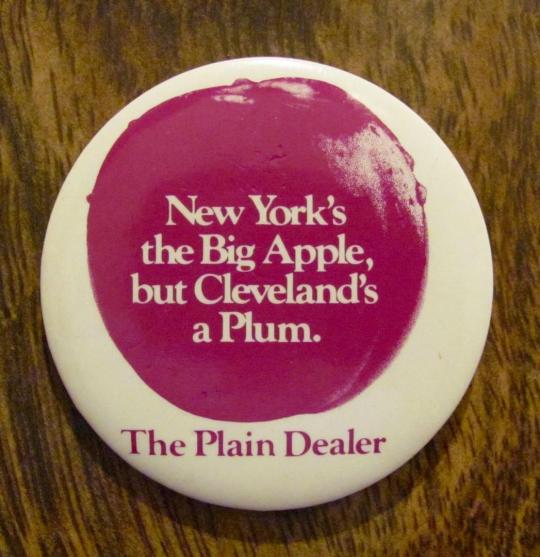
-------------------------------------
Give us a quick bio.
Born in Cleveland, 1981. We moved to the west side suburbs when I was six. My parents didn’t listen to much music, and I don’t have older siblings. So I didn’t really listen to music at all until I was in high school, and I didn’t listen to any of the grunge or ‘90s stuff that was popular. I got real into the Beatles when I was in ninth grade, and at some point I got the Velvet Underground’s first album from the library because I saw Andy Warhol’s name on the cover. I didn’t know anything about them, so that was a real shock. I probably first heard Iggy Pop via the Trainspotting soundtrack, and pretty soon after I started getting into punk and generally more obscure stuff. Now I listen to more electronic stuff, ambient stuff. I also like most anything that falls under the broad “post-punk” umbrella. I really hate “rama-lama ding-dong” rock and roll.
What came first – music or drawing interest?
Drawing. I was always drawing… I’ve been a semi-regular contributor to Mineshaft for many years, which is a small zine/journal that features a lot of underground comix related stuff, but also has a beatnik vibe and includes poetry and writing. I’ve done the odd thing here and there for other zines, but I don’t really fit in anywhere.
Don’t really fit it – I feel that phrase describes a lot of the best / more influential Ohio musicians / bands. Did you feel that kind of feeling about Peter as you researched and wrote the book?
Peter was well liked, and he knew a vast array of people. If anything, he fit in in too many situations. He was spread thin.
When you lived in Philly, did you get a sense of any kind of similar proto-punk scene / era in that town? I sometimes, perhaps jingoistically, think this particular kind of music is almost exclusively confined to the Rust Belt.
I lived in Philly for nearly 11 years. As far as the old scene there, they had Pure Hell. But back then, anybody who really wanted to do something like that would just move to NYC.
So, is there a moment in time that started you on a path towards wanting to dig into Cleveland’s proto-punk past like this?
It was just something I had a vague interest in, going back to when I first heard Pere Ubu. And then later learning about the electric eels, and starting to get a feeling that Cleveland had a lot more to offer than just the Dead Boys. The Rocket from the Tombs reunion got things going, and that’s when I first started to hear Laughner’s name. A few years later, a friend sent me a burned CD of the Take the Guitar Player for a Ride collection, and I started to get more interested in Peter specifically.
Despite any first wave punk fan’s excitement about a Laughner bio, this book is moreso a history of Cleveland, and trying to connect those odd underground, counterculture, or mythological connections that the Chamber of Commerce tends to ignor as the town’s import. Was there a moment where you realized this book needed to go a little wider than only telling the tales of Laughner and the bands of that era? (Not that there’s anything wrong with that!)
Very early on I realized that none of this would make sense or have any true meaning without the appropriate context. The activities of the early Cle punk scene need to be viewed in relation to what was going on in the city. I think this is just as true with NYC or London – these were very specific contexts, all tangled up in politics, crime, rent, television, and also the specifics of the more hippie-ish local countercultures that preceded each region. You’ve got Bowie and Warhol and all that, but in Cleveland you’ve also got Ghoulardi and d.a. levy. Mix that up with deindustrialization and a picture starts to form.
youtube
So when did you decide on doing this book? You’ve mentioned this was your first attempt at doing a full graphic novel – and boy, you went epic on it!
I did a short version of Peter’s story back when I was living in Philadelphia. But upon completing that version – which I now think of as a sketch – it became clear that there was a lot more to say and to investigate. I spent about a year just thinking about it, forming contacts with some people, and tracking down various reference materials like records, zines, books, etc. Then my wife got a new job at Cleveland State University, so we left Philly. Once I landed back in Cleveland I started working on the book in earnest.
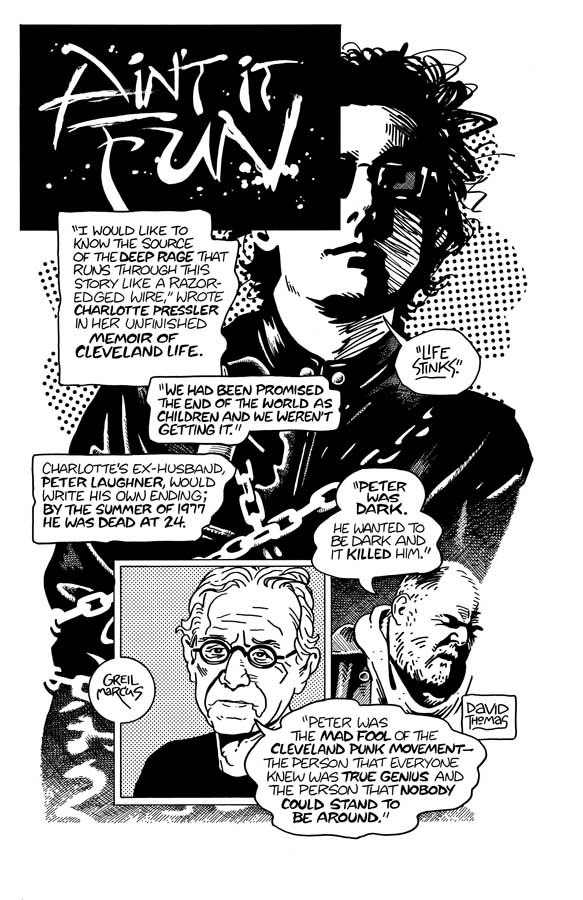
Page from Ain't It Fun -- all book images courtesy of the author.
By any chance was Greil Marcus’ book, Lipstick Traces (1989), an inspiration, as far as the “hidden history” factor, the trying to connect seemingly unconnected and lost historical footnotes into a path towards the culture’s future?
Yes. I read Lipstick Traces when I was around 19 or 20, and I’d never seen anything like it before. It really blew my mind, all the stuff about the Situationists and Dadaists and all that. Later on, I read Nick Tosches’ Dean Martin biography, Dino, and that was another mind blower. Another major influence is Iain Sinclair.
Ah Dino, another Ohio native. So, Laughner’s one-time partner, Charlotte Pressler’s book is mentioned, and I’ve seen it referenced and talked about for years – any inside word on if/when she might have that published?
Charlotte never wrote a book, though she did co-edit a book that collected the work of local poets. As far as her own writing, she’s done all manner of essays and poetry, and probably some academic writing that I’m not familiar with. As far as her completing “Those Were Different Times”— which was intended as a total of three essays— I’ve got some thoughts on that, but it’s not really my place to comment on it.
Pressler sounds like a very serious person in your book, as you say, she was kind of older than her years. But how was she to talk to?
Charlotte is serious, but she’s not dour. She’s got a sense of humor and she’s very curious about the world, always looking to learn new things. She’s an intellectual, and has a wide array of interests. We get along, we’re friends.
The fact that the town’s namesake, Moses Cleveland, left soon after his “discovery” and never came back – that’s like a template for how people envision a town like Cleveland: nice place to grow up, but you want to get out as soon as you’re legal. Even the musicians of the area might’ve agreed with that sentiment, even if many never left. Do you think that has changed?
I’m glad I left Cleveland, but I’m also glad I came back. First off, my family is here. Second, the cost of living is still reasonable. I don’t know how people live in New York. I never have any money. I’d make more money if I had a full-time job at McDonald’s. That’s not a joke, or me being self-deprecating. How do artists live in New York? How do they afford rent and 20 dollar packs of cigarettes? I’m just totally confused by the basic mechanics of this. So yeah, I’m in Cleveland. It’s not great, but what are my options? I can’t just go to Paris and fuck around like a bohemian. I would if I could.
In Ain't It Fun, you reveal that one of the seminal Cleveland scene dives, Pirate's Cove, was once a Rockerfeller warehouse – these kind of enlightening, almost comically perfect metaphors pop up every few pages. Not unlike the mythology that can sometimes arise in musician fandom, I wonder if these are metaphors we can mine, or just an obvious facts that the town drifted down from a center of industry to relative poverty.
“Metaphor” might be at too much of a remove. These facts, these landmarks — they create a complex of semiotics, a map, a framework. The city talks through its symbols and its landscape. If you submit to it and listen, it will tell you secrets. There is nothing metaphorical about this.
Is it a sign of privilege to look on destitution as inspiration? I’m guessing the sick drunks at Pirate’s Cove in 1975 weren’t thinking they were living in a rusty Paris of the ‘30s. Though I will say a thing I really loved about your book was that, for all its yearning and historical weaving, you still stick to facts and don’t seem to over-mythologize or put any gauze on the smog, like “Isn’t that so cool, man.” You capture the quiet and damp desperation of that era and Laughner’s milieu.
Poverty, decline, decay, entropy – these things are real. By aestheticizing them we are able to gain some control over them. And once you have control, you have the power to change things. This is not “slumming.” “Privilege” has nothing to do with it.
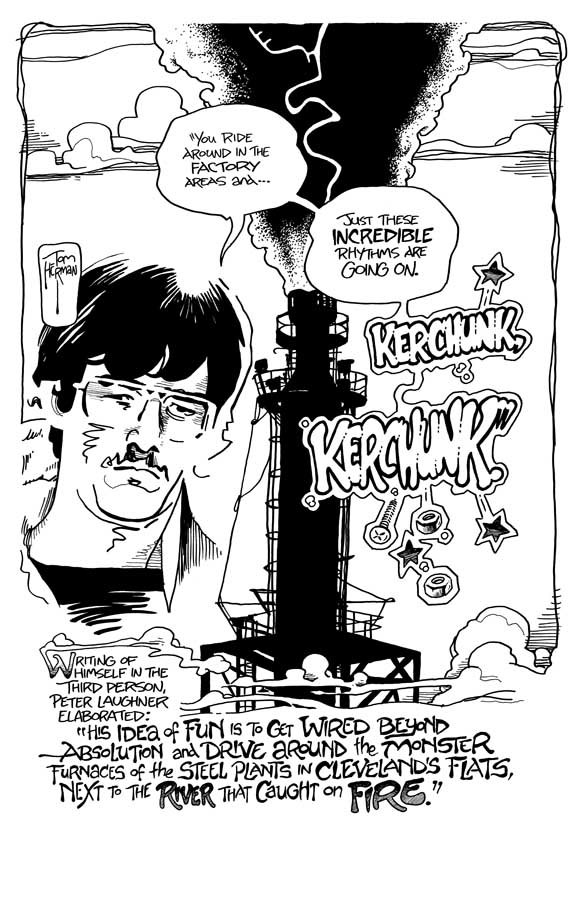
Page from Ain't It Fun
Do you know why the Terminal Tower (once the second tallest building in the world when it opened in 1928) was named that? It seems somewhat fatalistic, given the usual futurist positivism of the deco design era.
Terminal as in train terminal. It really pisses me off that there was once a time where you could go there and catch a train to Chicago or New York. It’s infuriating how this country dismantled its rail systems. And the Terminal Tower isn’t deco, but I think it is often confused with that style just by virtue of not being a gigantic rectangle. In that sense it does have more in common with a deco structure like the Chrysler building. Honestly, if you are looking for deco you might find more notable examples in Akron than you would Cleveland.
I notice a kind of – and bear with my lesser abilities to describe illustrative art – swirly style in your work that kind of aligns with art deco curves, maybe some Gustav Klimt…? In general, who were some illustrative inspirations for you early on?
That “swirly” style you describe is art nouveau. Deco came after that, and is more angular and clean. Additionally, a lot of underground comix guys were also poster artists, and there was often a nouveau influence in that psychedelic work – so there’s a bit of a thread there. As far as Klimt, I came to him kinda late, but I love him now.
The music of many northeast Ohio bands of that era has been generally tagged as “industrial” (the pre-dance industrial style, of course), cranky like the machinery of the sputtering factories in the Flats, etc… My guess is maybe the musicians were already finding used R'n'R instruments in thrift stores by that time, which would add a kind of layer of revision, turning old things into new sounds. Did you hear about of any of that? Or were there enough music stores around town? I know DEVO was already taking used instruments and refitting them; or electric eels using sheet metal and such to bang on…
I’m not a musician, so I don’t know anything about gear or stuff like that. I do know that Allen Ravenstine made field recordings in the Flats, and utilized them via his synthesizer. Frankly, I wish more of the Northeast Ohio bands had taken cues from Ubu and early Devo, because an “industrial” subculture definitely could have formed, like it did in England and San Francisco. But that never really happened here.
youtube
That kind of music was pretty popular on college radio and in a few clubs in Cleveland, though not many original bands with that sound arrived, aside from Nine Inch Nails who quickly took his act elsewhere… So in the book you mention local newsman, Dick Fealger. My memories of him are as a curmudgeon whose shtick was getting a little old by the time I was seeing him on the news, or his later opinion columns. Kinda your classic “Hey you kids, get off my lawn” style. You rightly paint him as a somewhat prescient reporter of the odd in his earlier days, though. I once had to go to a friend’s mother’s funeral, and in the next room in the funeral home was Dick Feagler’s funeral. I always regret not sneaking over and taking a peak into it to see who was there.
I like Feagler in the same way that I liked Andy Rooney on 60 Minutes. These were people that my grandparents liked. So I suppose my appreciation for Feagler is half nostalgia, half irony. I like cranks, grumps, letter-writers, street prophets. I like black coffee, donuts, diners, and blue plate specials – that’s Feagler’s world, the old newspaper world. Get up at 6 am and put your pants on, that kinda thing.
Yeah, I still found Feagler kinda funny, but like Jane Scott, while respect was always there, by the later ‘80s/’90s, both were set into almost caricatures who were kind of resting on their laurels.
Yeah, I remember seeing Jane at some random Grog Shop show back in the ‘90s, and I was kinda impressed. But no, she was never really cool. Jane was pure Cleveland, her career couldn't have happened anywhere else.
I remember seeing her sit right next to a huge house amp at the old Variety Theater for the entire duration of a Dead Kennedys show, taking notes for her review. Pretty impressive given her age at that point.
You also make a point of carving out an important space for The Damnation of Adam Blessing, a band that seems to get forgotten when discussing Cleveland’s pre-punk band gaggle. I find that interesting because in a way, they are the template for the way many Ohio bands don’t fit into any exact genre, and so often people don’t “get” them, or they’re forgotten later.
Damnation worked as a good local example for that whole psychedelic thing. They were very ‘60s. While the James Gang on the other hand, was more ‘70s— the cracks were starting to show with the ‘70s bands, they were harder and less utopian. Damnation feels more “Woodstock,” so they were useful to me in that regard.
I must add – for years I thought it was pronounced Laugh-ner, as in to laugh, ha ha, not knowing the Gaelic roots. Once I learned I was pronouncing it wrong, I still wanted to pronounce it like laughing, as it seemed to fit so darkly correct with how his life went, and Cleveland musicians’ love of bad puns and cheap comedians and such… Of course when I learned that it was an “ethnic” name, it made it that much more Cleveland.
Yeah, everybody says his name wrong. I used to too, and had to really force myself to start saying it as Lochner. But everybody says Pere Ubu wrong as well – it’s Pear Ubu.
I hate any desecration of any artwork, but I always loved the blowing up The Thinker statue story, as it seemed such a powerful metaphor of the strength of art, and Cleveland itself – the fact that The Thinker himself still sits there, right on top of the sliced-up and sweeping shards from the blast. It’s still there, right? And isn’t it true that there are like three more “official” Thinker statues in the world?
Yeah, I don’t condone what happened, but it is kinda cool. As a kid, the mutilated Thinker had a strong effect on me — I couldn’t have put it into words at the time, but I think it gave me a sense of the weight of history. It’s almost like a post-war artifact in Europe, something that is scarred. And yes, it’s still there outside the museum. And it’s a cast. I think there might be five official ones, but I’d have to look that up. If you are ever in Philadelphia, swing by the Rodin museum and check out The Gates of Hell.
I have only become a bigger fan of Laughner’s as the years pass. But there is something to the critique that perhaps he never really found his singular sound; that he was copping bits from Lou Reed and Dylan, and couldn’t keep a band together to save his life. And there was supposedly a feeling among some in the NYC scene that he was a bit of a carpetbagger.
youtube
Everybody has their influences, so Peter wasn’t in any way unique in that sense. I know he has a reputation for doing a lot of cover songs — which is true — but he also wrote a lot of originals, and there are some damn good ones which are still unreleased. “Under the Volcano” is just one such unheard song which I mention in my book, but there are others. As far as finding his own singular sound, he probably came closest to that with Friction. That group borrowed heavily from Television and Richard Hell, but also drew upon Richard Thompson and Fairport Convention. And when you think about it, those were really unlikely influences to juxtapose, and it created something original. Frustratingly though, Friction never achieved their full potential, as Peter was already losing it.
Yeah, Friction is kind of way up there with the “What if” bands… It’s interesting that for all his legend as a proto-punk figure, perhaps Laughner’s signature songs – Sylvia Plath” and “Baudelaire” – were gorgeous acoustic numbers. Though of course those early Pere Ubu songs were proto-punk and post-punk templates, somehow...
youtube
I honestly don’t know what happened with Ubu, as it is pretty distinct from Peter’s other work. Thomas isn’t really a musician, so we can only give him so much credit with how that sound developed. I honestly don’t know. There just must have been some sort of alchemy between the various players, and Thomas understood it and was able to encourage and guide it in the projects that followed over the years.
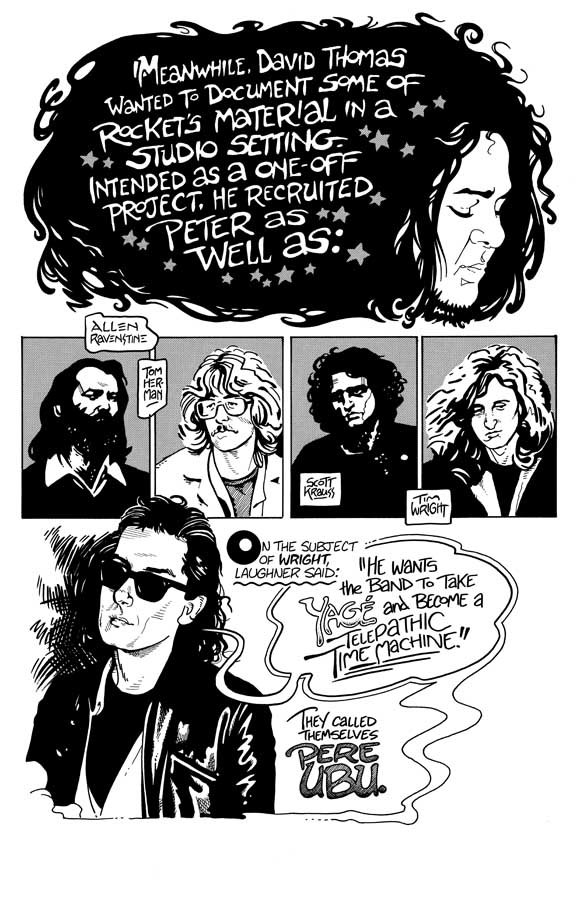
Page from Ain't It Fun
You also didn’t really detail Pere Ubu’s initial breakup – was there just not much to say?
Yeah, I think I mentioned it, but no, I didn’t really get into it. Pere Ubu is kind of a story unto themselves. But it might be worth mentioning here that Home and Garden was an interesting project that came out of that Ubu breakup. And Thomas also did some solo albums, but I’m not as familiar with those.
youtube
Yeah, I saw Home and Garden a few times way back, good stuff. You’ve mentioned to me that there were some people that didn’t want to talk to you for the book; and that people were very protective of Peter’s legacy and/or their friendship with him. To what do you attribute that?
It has everything to do with Peter’s early death. Some people are very protective of how Peter is remembered. And I think some people weren’t exposed to Peter’s dark side, so when they hear those descriptions of him it strikes them as untrue. I think Peter showed different sides of himself to different people.
I kind of felt as I was reading that you might say more about Harvey Pekar, as not only is he an interesting figure, but the most famous graphic novelist from Ohio, and I assume an inspiration of your’s.
Pekar’s great. Especially the magazine-size issues he was doing in the late ‘70s up through the ‘80s. It was important to me to include him in the book. But Pekar was a jazz guy, and that’s a whole other story, a whole other tangled web.
So, Balloonfest! Hilarious. I almost forgot about that. But I do remember Ted Stepien owning the short-lived Cleveland professional softball team; and for a promotion, they dropped softballs off the Terminal Tower, and if you caught one you won $1,000 or something. Do you recall that? It’s one of my favorite fucked-up Cleveland stories. Balls smashed car roofs, and cops immediately told people to run away.
youtube
Yeah, I’m aware of that baseball stunt. I generally try and stay away from anything even remotely related to professional sports teams — it gets talked about more than enough elsewhere. Oddly, I am interested in athletes who work alone, like Olympic skiers. I’m attracted to that solitary focus, where the athlete isn’t competing against other teams or players, but more competing with the limits of the human body, competing with what the physical world will allow and permit, that whole Herzog trip. I’m also interested in the Olympic Village, as this artificial space that mutates and moves across time and across continents.
As far as Balloonfest, I still watch that footage all the time. I use it as a meditation device. I’ll put it on along with Metal Machine Music and go into a trance.
youtube
A few years ago, as I am sure you are well aware, noted British punk historian Jon Savage put together a Soul Jazz Records comp of Cleveland proto-punk called Extermination Nights in the Sixth City. I grew up in Cleveland, lived in Columbus for awhile, and I never heard it called “the Sixth City.” Have you? If so, what does it refer to?
Nobody calls it that anymore. It’s an old nickname back from when Cleveland was literally the sixth largest city in the country.
I’d guess Ain’t It Fun was a tiring feat to accomplish. But do you have another book in the works? And if someone wanted to option Peter’s story for a movie, would you sign on? I personally dread rock biopics. They’re almost universally bad.
Yeah, I’ve got an idea for another book, but it’s too early to talk about that. As far as biopics, they are almost always bad, rock or otherwise. Rock documentaries are often pretty lousy too. A recent and major exception would be Todd Haynes’ Velvet Underground documentary, which is just goddamn brilliant. A film about Peter in that vein would be great— but there’s just no footage to work from. He didn’t have Warhol or Factory people following him around with a camera. So unless somebody like Jim Jarmusch comes calling, I won’t be signing off on movie rights any time soon.
Unless there is more you’d like to say, thanks, and good luck with the book and future ventures!
Stone Church Press has a lot of projects planned for 2024 and beyond, and I encourage anyone reading this to support small publishers. There is a lot of very exciting stuff going on, but you have to work a little to find it. Amazon, algorithms, big corporate publishers — they’re like this endless blanket of concrete that smothers and suffocates. But flowers have a way of popping up between the cracks.
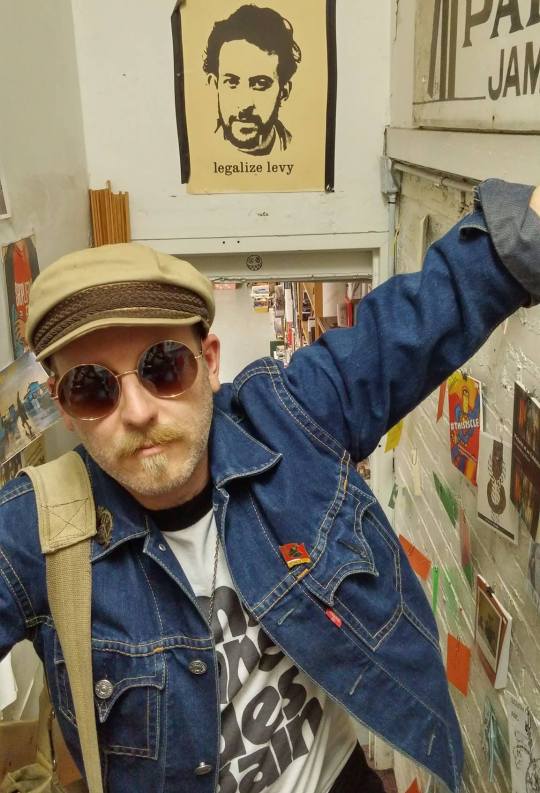
Aaron Lange, 2023 (Photo by Jake Kelly)
#punk#cleveland punk#velvet underground#peter laughner#pere ubu#protopunk#clevelandrocks#cleveland#devo#nycpunk#1970s rock#aint it fun#Ghoulardi#smog veil#guns n roses#ohio punk#ohio#punk rock#garage punk#biographies#eric davidson#lou reed#television#dead boys#rocket from the tombs#Youtube
17 notes
·
View notes
Text

#shamanluna#shamanluna aurelien favere#peacefull music#indie rock#indie#indie music#biography#biografia#biographie
11 notes
·
View notes
Text
Burt Lancaster reading Rock Hudson’s last public statement during the Commitment to Life fund-raising gala held at the Bonaventure Hotel in Los Angeles on September 19, 1985.


— excerpt from An American Life by Kate Buford
#i think it was bill misenheimer who said they called so many people who would dodge or say no thru an agent and burt said yes the second he#received the phone call#rock hudson#video#commitment to life benefit#amfar gala#aids crisis#1985#1980s#activism#an american life#quote#biography#sexuality
19 notes
·
View notes
Text
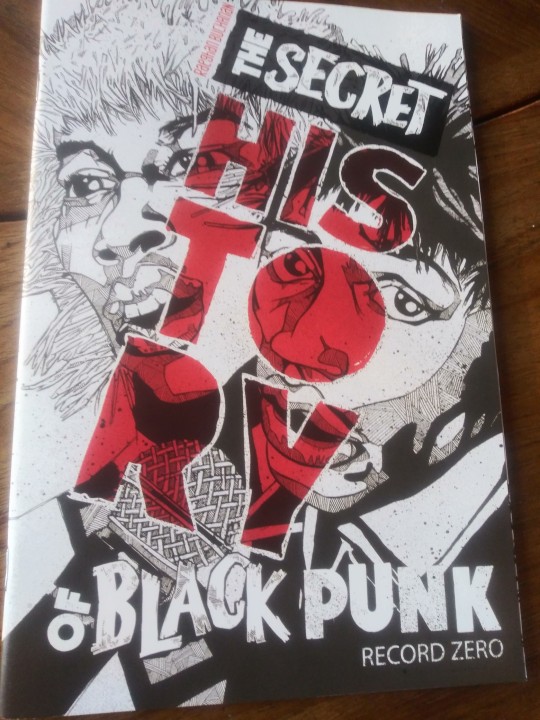

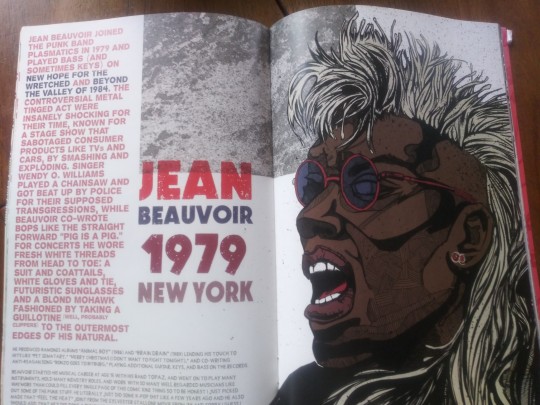
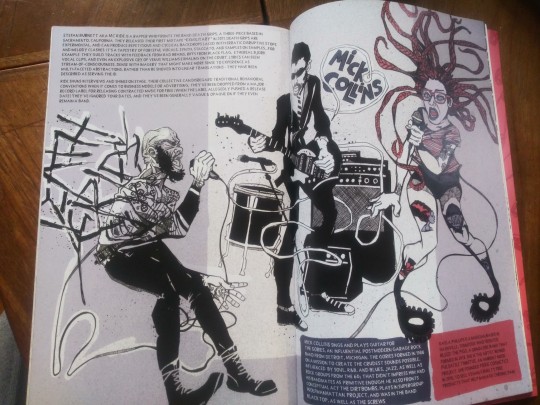
Secret History of Black Punk by Reaghan Buchanan
Biographies combined with great design and illustrations.
8 notes
·
View notes
Text

Marianne Faithfull with a copy of her autobiography, "Faithfull," September 20, 1994. Photo by Ron Galella.
#marianne faithfull#classic rock#rockstar gf#rockstar girlfriend#sixties#60s rock#60s#60s icons#ron galella#the rolling stones#mick jagger#quotes#books#autobiography#biography
12 notes
·
View notes
Text
Bohemian Rhapsody (2018)
Another biographical movie about the life of the rock band, Queen, and the most famous singer, Freddie Mercury 🎸
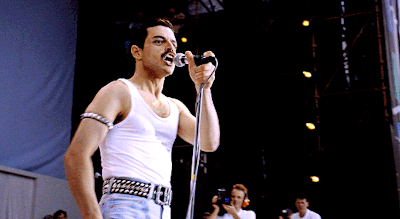
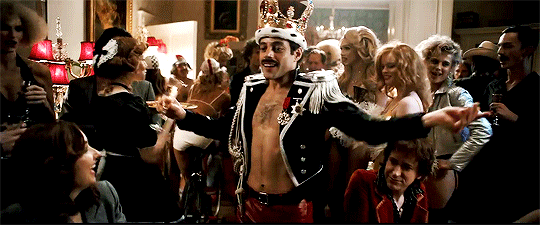

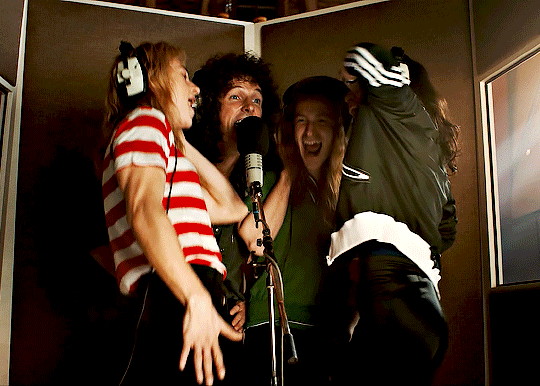

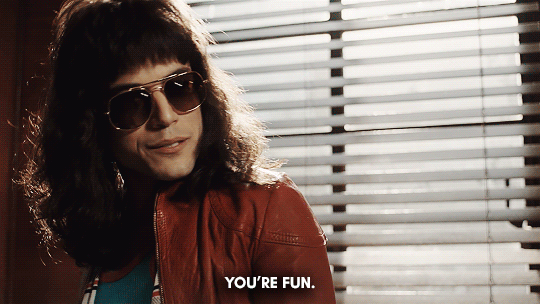
14 notes
·
View notes
Text
Imagine Dragons✨️

Imagine Dragons es una banda de rock formada en 2008 por su vocalista Dan Reynolds, el guitarrista Wayne Sermón "Wing", el bajista Ben McKee y el baterista Daniel Platzman, en Las Vegas, Nevada, Estados Unidos. El nombre del grupo es un anagrama, su nombre original es Ragged Insomnia y fue revelado en el vídeo "On Top of the World".
youtube
Todo comenzó cuando aún eran estudiantes de la Universidad Brigham Young, ser grandes amigos y tener la misma pasión por la música, le bastó a el dúo en ese entonces Dan y Andrew para reclutar a más miembros para completar la alineación para su banda de sueño. Fue entonces cuando Daniel, Wayne y Ben McKee llegaron.
Su primera experiencia fue probando en Utah, Estados Unidos, antes de mudarse a Las Vegas, donde finalmente lanzaron sus primeros tres mini-álbumes. El primer trabajo discográfico, uno homónimo llamado Imagine Dragons, llegó en 2010, seguido por "Hell and Silence" en el mismo año. No perdieron tiempo y lanzaron otro disco titulado "Its time", un año más tarde antes de que finalmente obtuvieran un contrato de grabación.
youtube
La banda obtuvo su gran oportunidad cuando fueron llamados a participar en el Bite of Las Vegas Festival, porque Pat Monahan cayó enfermo por lo que su banda no podría llevar a cabo su presentación en el evento.
El tema "Radioactive", alcanzó el top 3 en el Hot 100 de Billboard y continuó hasta convertirse en uno de los mejores 10 en múltiples ocasiones. Rompió el récord de la pista más larga entre los cinco primeros y se convirtió en la canción de rock más vendida en la lista de funcionamiento Nielsen en la historia digital. El tema forma parte de la banda sonora de varios tráilers de lanzamiento del conocido videojuego “Assassin's Creed III”, y de la adaptación al cine de la novela de Stephenie Meyer, “La Huésped”, también en las series “Arrow”, “The Vampire Diaries”, “On Top of The World" para la película "Los Croods", este último también aparece en los videojuegos “FIFA 13” y “Pro Evolution Soccer 2013”, siendo así la primera coincidencia de bandas sonoras entre las dos rivalidades futboleras y soundtrack del videojuego "NBA2k14" y del video de introducción del videojuego MLB 2013 the show.
youtube
youtube
youtube
Maravillosa banda🎸
11 notes
·
View notes
Text

Johnny Cash: The Life and Legacy of the Man in Black
An illustrated biography of Johnny Cash that tells his life story through never-before-seen personal photographs and memorabilia from the Cash family
Available Now: https://amzn.to/3SG2bYT
Johnny Cash: The Life and Legacy of the Man in Black
9 notes
·
View notes